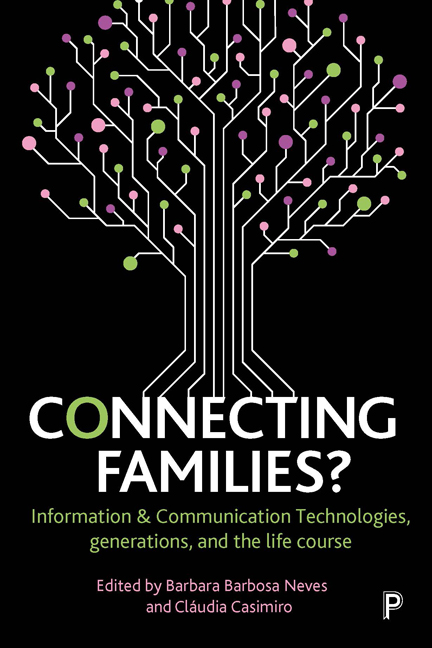Book contents
nine - Use of communication technology to maintain intergenerational contact: toward an understanding of ‘digital solidarity’
Published online by Cambridge University Press: 22 April 2022
Summary
Introduction
For more than half a century, gerontologists and family scholars have been concerned with describing and explaining patterns of contact between parents and their adult children – a dimension of intergenerational relations that is often referred to as associational solidarity (Silverstein and Bengtson, 1997; Silverstein and Giarrusso, 2010). It is not surprising that associational solidarity has been a central focus of studies of later-life families, because such contact is essential in the exchange of both expressive and instrumental support between the generations (Hank, 2007; Swartz, 2009). In this paper, we extend the study of associational solidarity by considering older mothers’ use of technology to maintain contact with adult children – what we refer to as ‘digital solidarity’.
The role of digital solidarity in the study of intergenerational solidarity
The intergenerational solidarity paradigm (Bengtson and Roberts, 1991; Silverstein and Bengtson, 1997) incorporates six interrelated components of family solidarity: (a) affectional (emotional closeness); (b) associational (frequency of contact); (c) normative (norms of obligation); (d) consensus (agreement about values); (e) structural (geographical proximity); and (f) functional (exchange of support). We propose that digital solidarity adds a new dimension to the concepts of both associational solidarity and functional solidarity by augmenting face-to-face and telephone communication, and enabling the provision of expressive and, in some contexts, instrumental forms of support. Our development of the concept of digital solidarity rests on it being a form of communication that is instant and virtual (and, after purchase of the required device, inexpensive). As such, it serves to enhance intergenerational cohesion in ways that both complement and supplement more traditional forms of communication that require greater investments of time and efforts of coordination. Digital communication can be more frequent, while still being perceived as less intrusive than phone or face-to-face contact, and consequently may be particularly valuable to help frail older parents stay in regular contact with their adult children.
In this chapter, we focus on the role of communication technology (CT) in associational solidarity. Although we propose that digital solidarity is an important dimension of functional solidarity as well, our data do not provide details on the type of content of the emails and texts exchanged between mothers and their adult children necessary to study this dimension.
- Type
- Chapter
- Information
- Connecting Families?Information and Communication Technologies, Generations, and the Life Course, pp. 159 - 180Publisher: Bristol University PressPrint publication year: 2018
- 1
- Cited by



